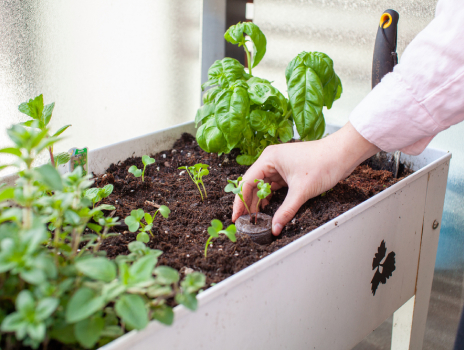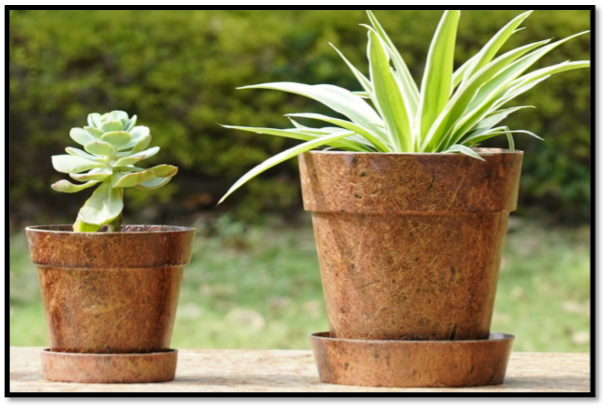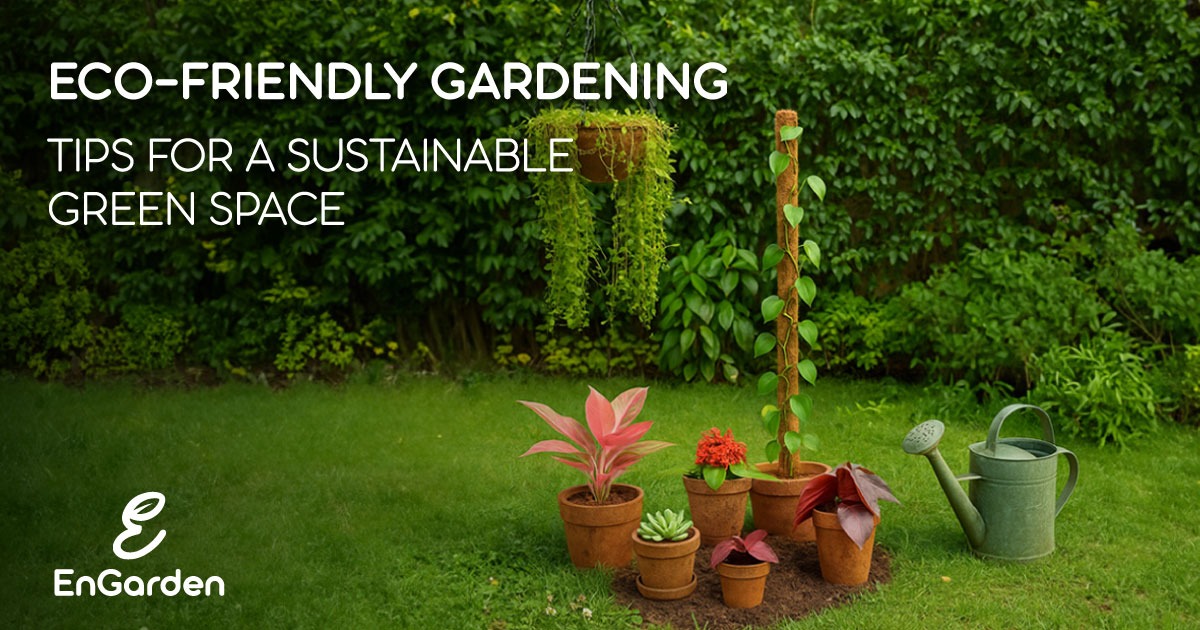Eco-friendly gardening, also known as sustainable or green gardening, emphasizes methods that reduce pollution, conserve resources, and promote biodiversity. The ecology doesn’t have to suffer to create a lovely garden. Adopting eco-friendly practices can transform a garden into a flourishing, sustainable retreat. Sustainability is no longer an option; it is now necessary for survival.
Replacing timber with an environmentally conscious and thoughtful substitute is a self-evident step toward achieving a sustainable future. A considerable quantity of carbon sequestration is accomplished since there is no deforestation as a result of avoiding the consumption of timber. The same principles should also apply to gardening practices. Coir-based substitutes for planters, pots, and other products offer a number of benefits as a zero-waste gardening technique and a climate-conscious gardening tool.

In addition, various strategies and tools support eco-friendly gardening.
- Using organic waste after converting it into compost is one effective technique for sustainable gardening.
- Make nutrient-rich compost out of your yard trash and food leftovers to feed your plants and soil rather than disposing of them in a landfill.
- Fruit and vegetable peels are among the products that can be composted.
- Using local/native plants and vegetation
- Planting native plants is one of the simplest methods to design an environmentally friendly garden.
- Compared to non-local alternatives, these plants require less water, fertilizer, and upkeep since they are naturally adapted to your local climate, soil, and pests.
They require less water use and need less quantity of herbicides. - These assist regional wildlife and pollinators.
- Less consumption of water
- Water conservation is essential due to increasing issues of water scarcity.
- In addition to wasting a valuable resource, overwatering can be detrimental to plant health.
- To directly target roots, use soaker hoses or drip irrigation.
Mulch garden beds to keep the soil moist; water early in the morning or late at night to minimize evaporation. - Minimize the consumption of chemicals, use of pesticides, and other germicides, etc.
- Making gardening and vegetated habitats perfect for animals/for supporting biodiversity
Biodiversity is welcomed and supported in a sustainable garden. Green areas can serve as a haven for birds, bees, butterflies, and other animals by offering them food, drink, and cover.
planting pollinator-attracting flowers, installing a birdbath or small pond, creating a bug hotel, or leaving a brush pile for cover.
- Select Eco-Friendly Materials
Use repurposed, recycled, or environmentally sourced materials when constructing garden walks or buildings. This gives your garden a special flair while lowering your carbon footprint.
Examples include using recycled bricks or stones for paths, repurposed wood for raised beds, and biodegradable pots rather than plastic ones. Use of coir pots is the future of the gardening industry in India as well as abroad.

- Are coir pots good for plant growth?
Natural, earthy brown pots are sterile, clean, and ideal for all plants. They come in all standard sizes and are 100% natural and organic, eco-friendly, biodegradable, and cost-effective. They are long-lasting and will be remembered for years. They allow roots to grow freely, which promotes faster and healthier plant growth and prevents transplant shocks. In addition, they have a beautiful appearance and add aesthetic value. They are lightweight and easy to handle. Coir is biodegradable in and of itself, and it becomes 100% biodegradable when it is manufactured with biodegradable resin.
Because of its inherent beauty, it can be used straight away without requiring much additional care or appearance enhancement. It can be lamination-applied, painted, or polished as necessary. On a big scale, it is water-resistant and resistant to termites and insects.
Usage of no-dig gardening techniques
Instead of tilling, the no-dig approach includes covering the soil with layers of organic materials.
- This method maintains moisture, enhances soil structure, and encourages beneficial microbial activity.
- Cover weeds or grass with cardboard.
- Compost, mulch, and soil should be added in layers.
- Directly plant in the top layer.
Coir Mulch Mat

Growing plants is only one aspect of eco-friendly gardening; another is developing a closer bond with the natural world. You can take advantage of a green area that is not only aesthetically pleasing but also good for the environment by choosing wisely and implementing sustainable habits. Watch as your garden develops into a flourishing, sustainable ecosystem by starting small and maintaining consistency.

